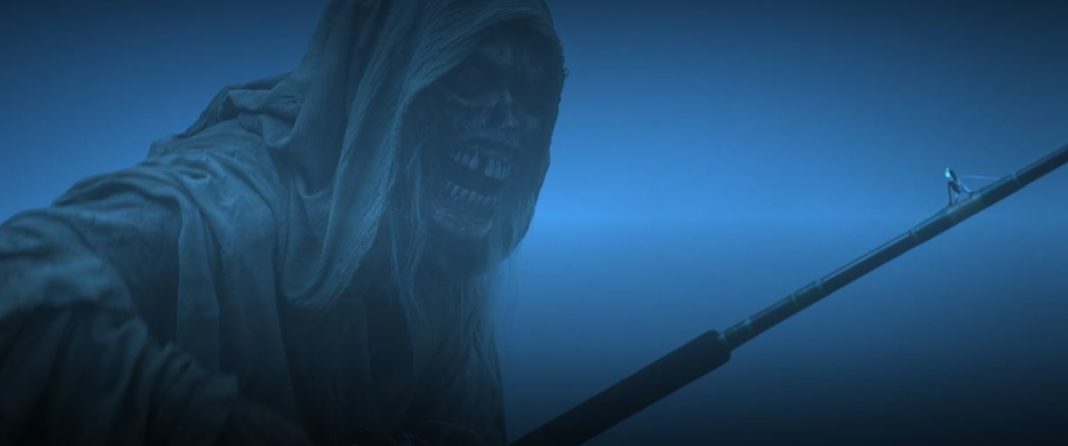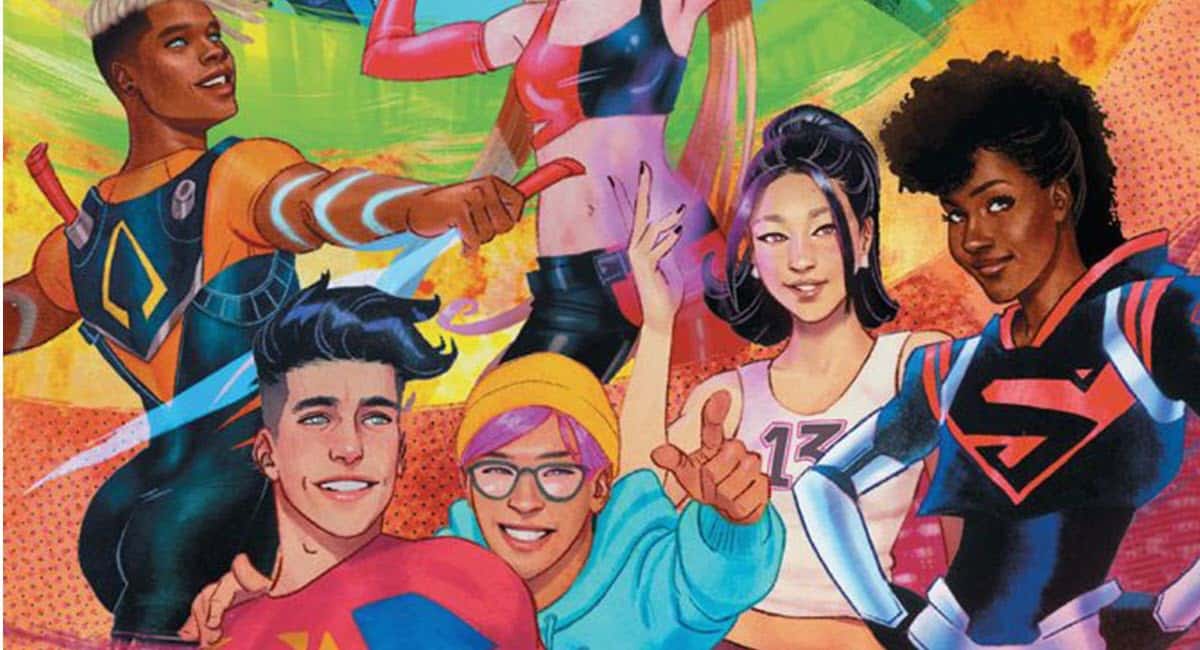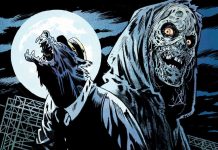Six episodes, twelve story segments, and a season renewal announcement later and Shudder’s Creepshow finally closes. What plagued the series since its first episode persisted all the way through to episode 6, its final installment. Lazy scriptwriting, erratic tone shifts, comic book effects devoid of rhyme or reason, and unremarkable direction all converged to give eager horror fans a show that wanted to be as important as the George Romero and Stephen King classic but never quite stuck the landing.
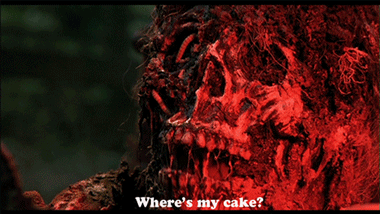
Before we dive into the last episode, let’s do a quick rundown of the things Creepshow got right. For starters, the creature design and most of the makeup work looked great and was bloody fun to look at while it was in full display onscreen. It was impossible to have expected any less knowing effects master Greg Nicotero was involved as one of the show’s producers while also taking to the director’s chair for some of the show’s segments.
Creepshow also had two great performances given by Bruce Davison (as the mortician in “Night of the Paw”) and DJ Qualls (who carried “The Finger” segment on his shoulders). Each actor succeeded in giving their characters much needed emotional weight and personality, even when the scripts did little to help them.
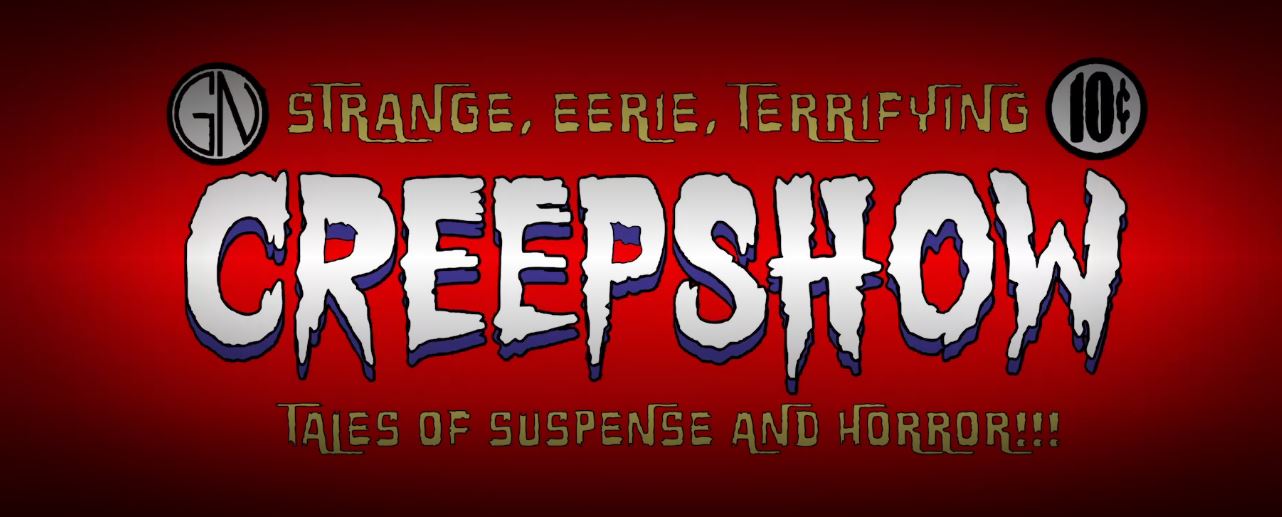
Davison and Qualls didn’t act like they were inside an EC Comics homage or on a niche nostalgia trip. They felt human and relatable, layered and interesting. Their natural approach to all things bad, bloody, and even moralistic turned their segments into intricate character studies inside grand guignol horror worlds.
What Creepshow got wrong, on the other hand, outweighs and greatly overshadows its notable victories. I’ve talked about the show’s failings at length in previous reviews, but what I think bears mentioning is that, ultimately, the show lacked soul. It was aimless and carelessly curated. Nothing ever felt cohesive.
I think a lot had to do with the showrunners wanting to make series intentionally look and feel like a B-movie production. This isn’t a necessarily a bad idea, but then each episode has this clean digital look that stops it from actually getting that EC Comics texture. The Creep’s animated transitions and the comic book effects also failed to fall in line with the B-movie concepts it wanted to evoke. Instead what we get is digital B-movie effect that looks more like a low-quality digital comic than a pulpy EC Comic. And there’s a big difference between low-quality paper and pixelated JPEGS.
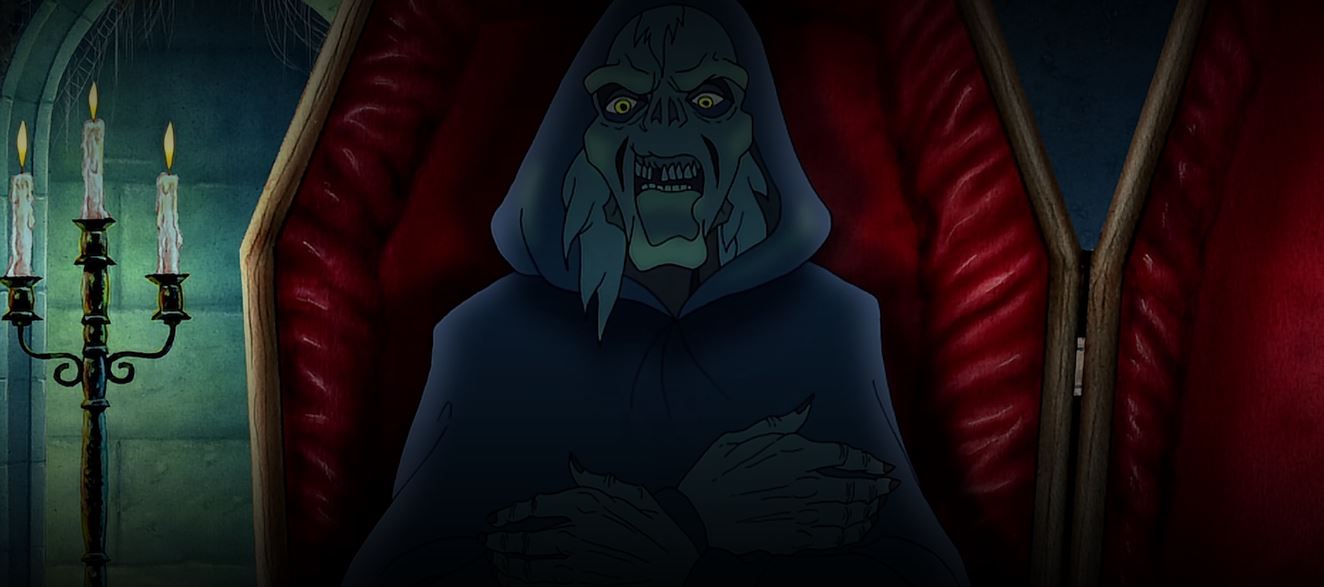
The first segment of Creepshow’s final episode encapsulates most of the bad that’s plagued the show all season long. It’s titled “Skincrawlers” and it stars Dana Gould working off a script by Paul Dini (Batman: The Animated Series) and is directed by Roxanne Benjamin. An obsessed dietitian discovers a worm-like creature that eats fat. Dana Gould’s character enlists for the worm treatment only to discover the fat-eating creatures are laying eggs on the bodies the feast on.
The story has a very cartoony touch to its horror, which should come as no surprise to those who know of Dini’s work. The gore effects are plentiful but standard and the violence gleeful but uninspired. Worms come out of bodies, people writhe in pain, and one particular victim sprouts a larger worm creature that wants to eat our main character. This monster is all kinds of terrifying and disgusting and is a treat to see, even if it does look like a fatter version of H.R. Giger’s xenomorph as it bursts out of John Hurt’s chest in Alien (1979).
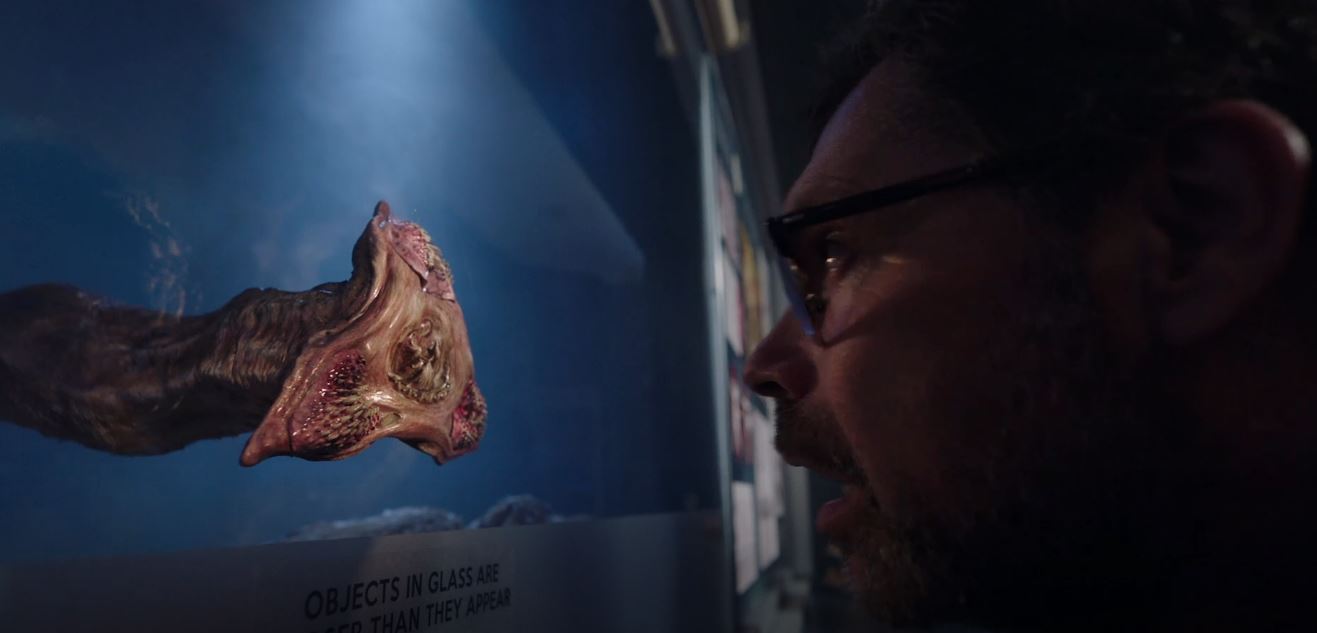
The segment tries to come off as witty in its criticism of fat shaming, where the fat protagonist fights off an evil diet solution while ascending to positive body image sainthood. It succeeds in quite literally telling you that’s what it wants to do, but the overall effect is lost an overtly simplistic script and questionable direction. The camera work is all over the place and does a terrible job of creating a tense scenario despite all the bodies flying around.
Dana Gould tries his best here and is the story’s highlight, but the script gives him little to do. That B-movie feel I was talking about comes off as very forced here and it derails the segment. It’s a shame. Gould would’ve made for a memorable character had he been given stronger material.
Tom Savini’s “By the Silver Water of Lake Champlain,” the episode’s second segment, ticks off more “good” boxes than “bad,” but it still struggles with script and acting problems. Based off a story by Joe Hill (NOS4A2), this story focuses on a Loch Ness Monster-like creature called Champy, a town legend whose existence’s never been confirmed. A young girl called Rose (played by Sydney Wease) searches for Champy after her father drowns trying to find it. She has to struggle with her abusive stepfather in the process, which sets up a satisfying death come the story’s end.
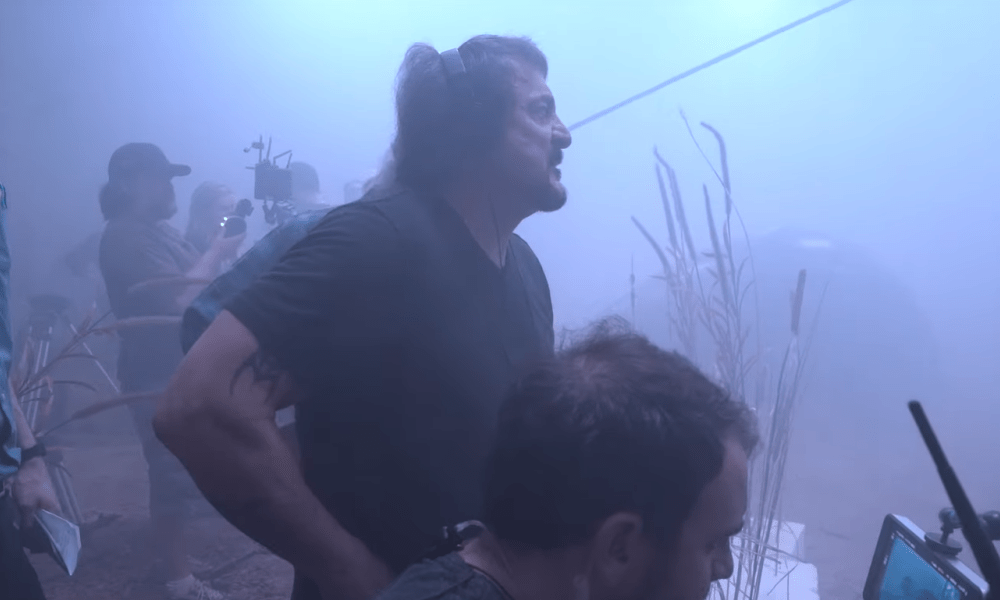
Savini can’t escape many of the problems discussed earlier, but where his segment shines (and quite brightly) is in its very atmospheric take on the sea creature concept. The segment is enveloped in thick fog and grayish hues that make Champy’s growls carry with an added sense of mystery. The fog makes you wonder what horrors hide behind it and it helps the segment become all the more engrossing.
Without giving much away here, the monster designs are creepy and remind of old Ray Harryhausen movies. In fact, this segment feels more like a Claymation creature-feature than a classic horror story. It knows how much to show doesn’t overstay its welcome. It leaves a lot to the audience’s imagination and it succeeds at giving us just enough to keep us thinking about the monster after the credits roll. “By the Silver Water of Lake Champlain” is the best story segment of the series on the visual effects side, with impressive sound design that actually adds to the story. Tom Savini proves to be a great visual storyteller with this one (a thing he had already proven with his 1990 remake of Night of the Living Dead and his segments on Tales from the Darkside).
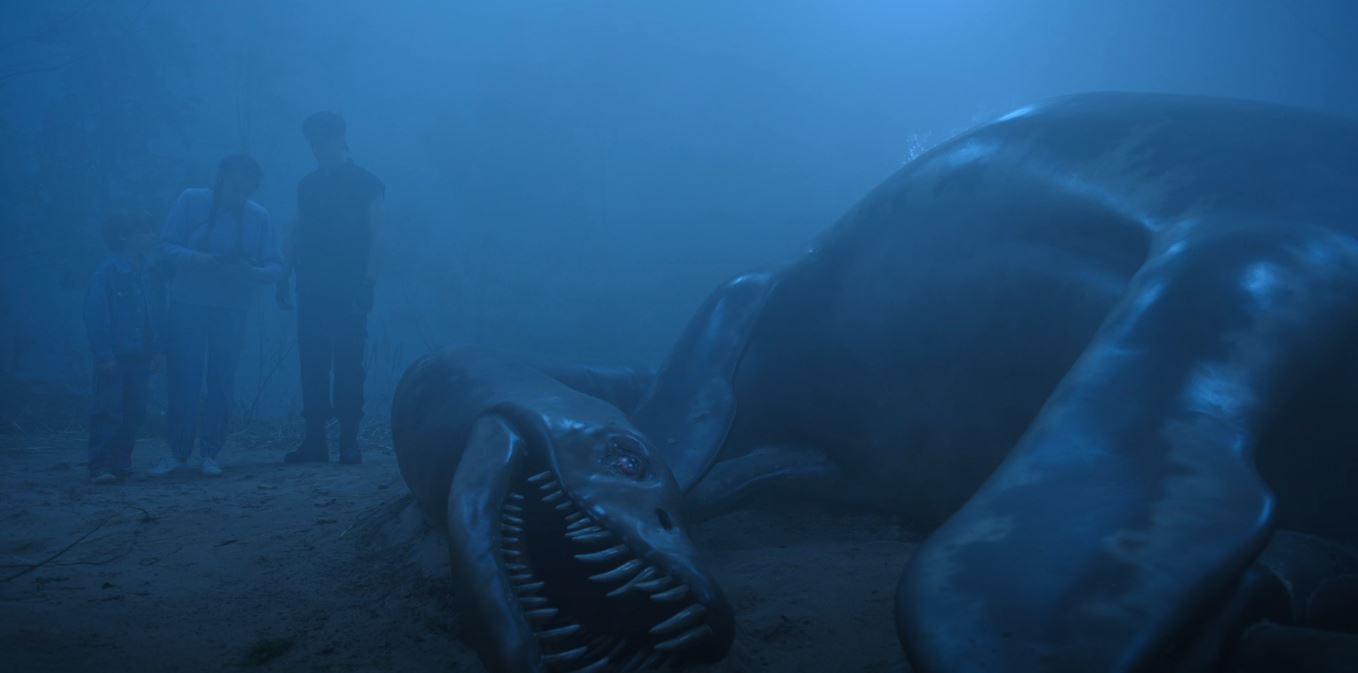
With season 2 already confirmed, it remains to be seen if Creepshow will find its soul or at least a beating heart somewhere along the line. We got very brief flashes of it in this first season, but not enough to create much anticipation for the next one. As it stands, George Romero’s and Stephen King’s original Creepshow reigns supreme, and the show has a long ways to travel if it wants to be considered worthy of the name and legacy it carries.


